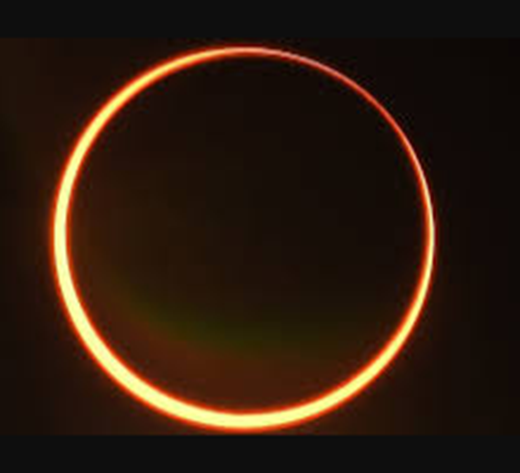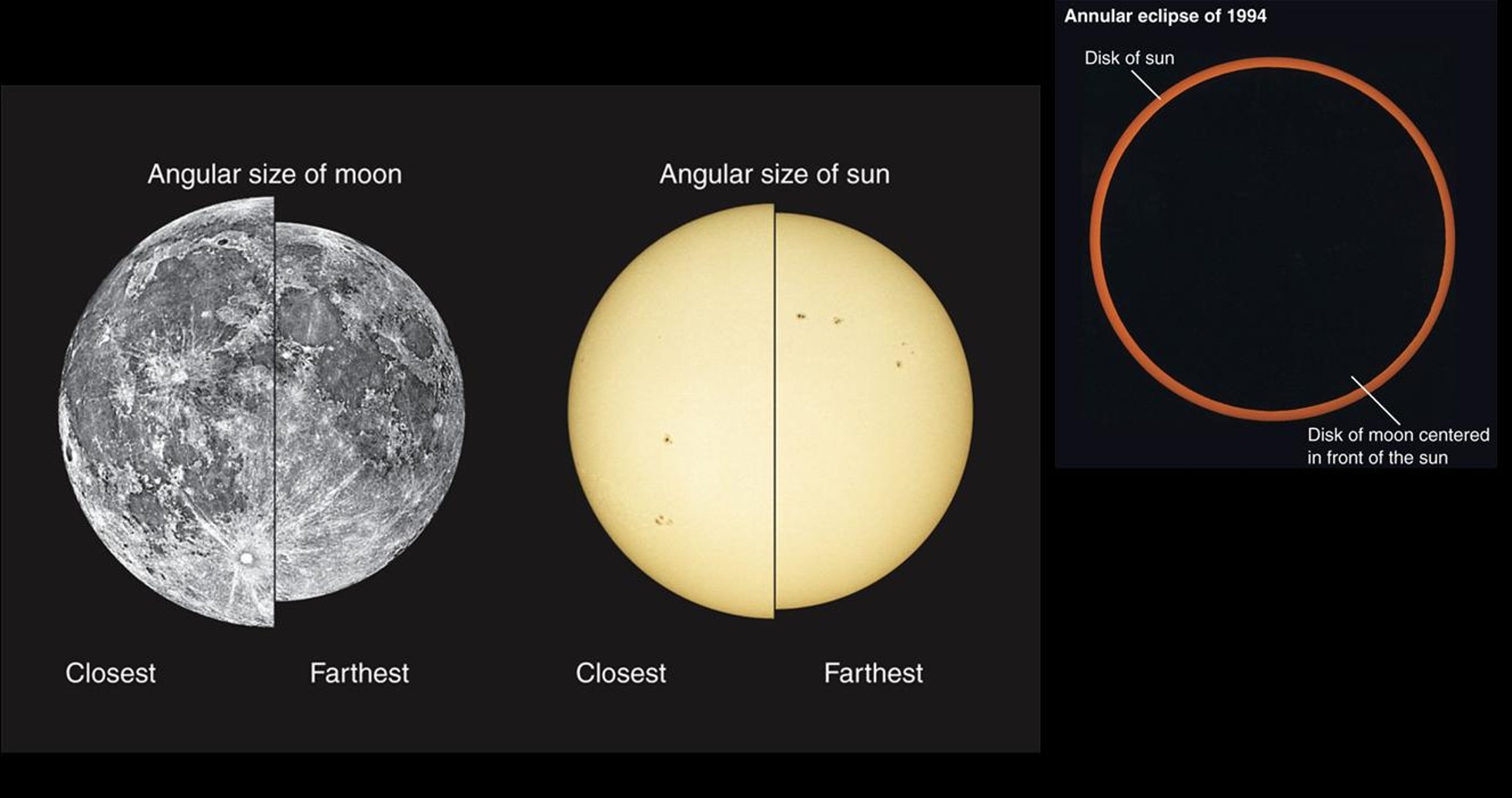Celestial Event
Annular Solar Eclipse – June 10, 2021
Published on May 16, 2023 by Mr. Narendra Sagar

The Annular Solar Eclipse of June 10, 2021, was one of the most fascinating celestial events of the year. Unlike a total solar eclipse, this eclipse presented the “Ring of Fire” – a spectacular sight where the Moon covered the center of the Sun, leaving a glowing ring around its edges.

The image shown above was captured during the Annular Solar Eclipse of January 15, 2010, at Kanyakumari by the StarGazing India Team. Similar to 2021’s event, the Moon was too small to cover the Sun completely, resulting in a blazing golden ring in the sky.
🌒 What Causes an Annular Solar Eclipse?

A solar eclipse occurs when the Moon passes directly between the Earth and the Sun, blocking its light. However, because the Moon’s orbit is not a perfect circle, its distance from Earth changes.
- When the Moon is closer to Earth (perigee), it appears larger and can cover the Sun completely, causing a total solar eclipse.
- When the Moon is farther (apogee), it appears smaller and cannot cover the Sun’s entire disk. In such cases, the Sun’s brilliant outer edges remain visible, forming a bright circular ring called the “Ring of Fire” or Annulus.
This is why the June 10, 2021 eclipse was annular rather than total.
🕒 Timings of the Eclipse
According to astronomers, the eclipse began at 1:42 PM IST and ended at 6:41 PM IST.
- The Ring of Fire was most visible in Northern Greenland, lasting for about 3 minutes and 51 seconds.
- Partial phases of the eclipse were visible across Northern Canada, Greenland, Russia, Northeast Asia, Europe, and parts of North America.
- The eclipse was not visible in India, and therefore, no traditional eclipse rituals (sutak, fasting, or puja rules) applied.
🌍 Where Was It Visible?
- Annular Phase (Ring of Fire): Northern Canada, Greenland, Arctic regions, and parts of Russia.
- Partial Eclipse: Northern America, most of Europe, Northeast Asia, and China.
- Not Visible in India – but followed keenly by skywatchers and astronomers through global live streams.
🔭 Scientific & Cultural Significance
- Purely Astronomical: This eclipse occurred in the Mrigashira Nakshatra and Taurus zodiac sign, but astrologically, it carries no direct influence on humans. The phenomenon is purely astronomical.
- Myth-Busting: Many superstitions circulated on social media, but StarGazing India emphasized a scientific approach, encouraging people to enjoy the rare event with proper eclipse glasses and filters.
- Global Interest: Despite the ongoing COVID-19 pandemic, astronomy enthusiasts safely gathered in Canada and Greenland to witness this breathtaking “Ring of Fire.”
⚠️ Safety Reminder
Never watch a solar eclipse with the naked eye. The Sun’s rays can cause permanent eye damage. Only certified eclipse glasses, solar filters, or projection methods should be used.
🌌 Conclusion
The Annular Solar Eclipse of June 10, 2021 was a spectacular reminder of the cosmic dance between the Sun, Moon, and Earth. While not visible in India, the event inspired global excitement and highlighted the beauty of astronomy when approached scientifically, without fear or superstition.
Posted by: Narendra Gor "Sagar", StarGazing India